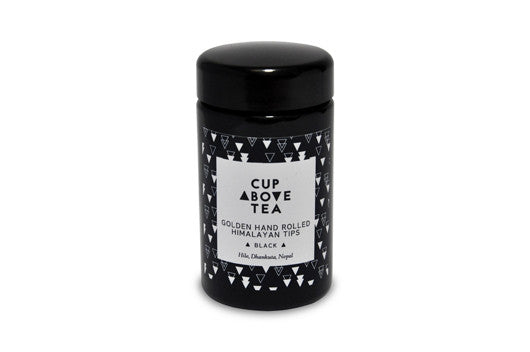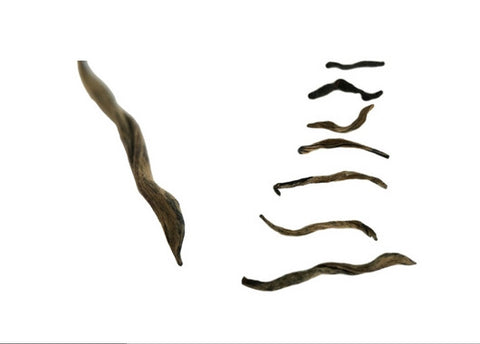Golden Hand Rolled Himalayan Tips - black tea
$3.95

| Style | Black Tea | |
| Origin | Jun Chiyabari, Hile, Dhankuta district, Eastern Himalayas, Nepal | |
| Season | Late autumn 14 | |
| Altitude | 1500m | |
| Batch | JCB1: 3kg micro lot |
With a total availability of just 3kg, this is an elite Nepalese black tea. Expect hints of silky caramel, smooth honey and light hazelnut notes. A signature autumnal tea from an exceptional garden. Crafted by hand to perfection.

 |
90 - 95 degrees Celsius | |
 |
1 x tablespoon (3 grams) | |
 |
150 ml water (small tea cup) |
|
 |
Infuse for 2 minutes |
The Stories We Drink
|
This black tea is from Jun Chiyabari, a small and exclusive organic estate in Nepal’s eastern Himalayas. The garden sits high in the hills of Hile, a small town in the Dhankuta district. Nepalese teas are fast developing a reputation in the industry as serious competition for some of nearby Daajeeling's finest teas. This tea, Golden Hand Rolled Himalayan Tips is hand plucked and hand rolled. This is both incredibly labour intensive and time consuming. The hard work is rewarded with an incredibly multi-layered, nuanced batch. Jun Chiyabari’s vision is to shy away from mediocre, machine processed, volume-based production which is common in neighbouring tea regions. Instead, the garden focuses wholeheartedly on boutique small batch manufacturing and innovative craftsmanship. We've secured an elite batch of tea with very limited availability. The beauty of working with such a small, innovative garden is that we can taste and evaluate many different small batches each with their own distinct flavour nuances and characteristics. Then we select only the very best for inclusion in our collection. Jun Chinyabari's aptitude for excellence was immediately evident when we evaluated this particular batch and this is the reason this tea has pride of place in the Cup Above signature collection. The garden is young and was established from scratch in 2001. The harvests are small and very limited in quantity. The quality is unsurpassed. The garden is organic and the small team is passionate about flavour, focusing on creating experimental and unusual styles that make the most of unique terroir. In developing this garden, tea cultivars were sourced from around the world. Very few similar estates have such diverse plantings. It is this diversity, the exquisite high mountain soil, a perfect climate and an unrelenting focus on quality that gives our Nepalese teas such a special character. We need look nowhere else in Nepal to secure the very best batches for you. We’re absolutely confident that they will come from Jun Chiyabari. Read more here. |
|




















